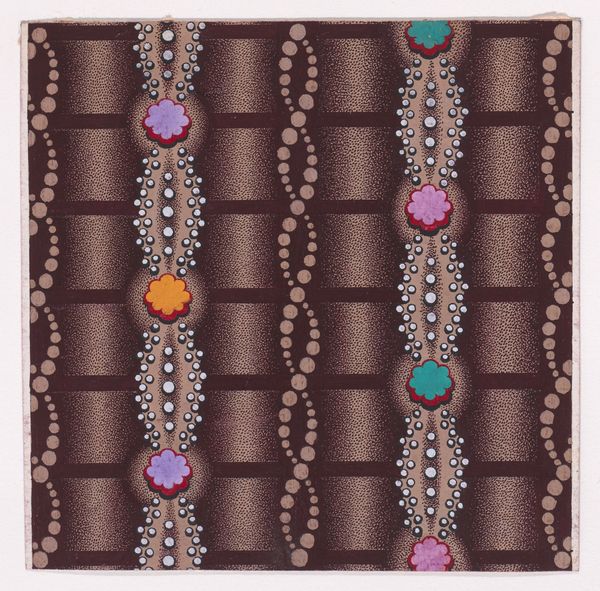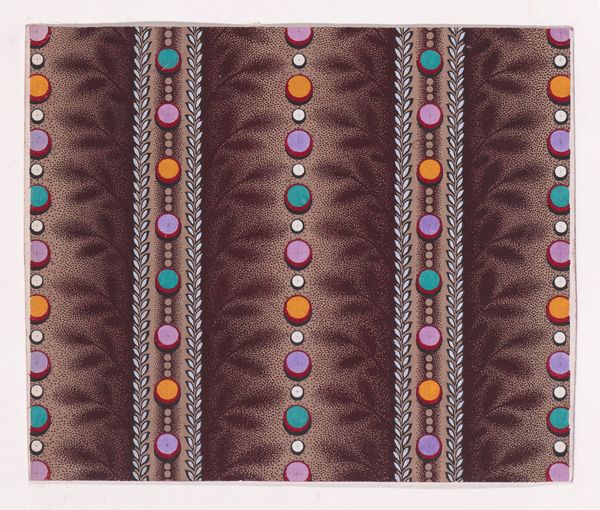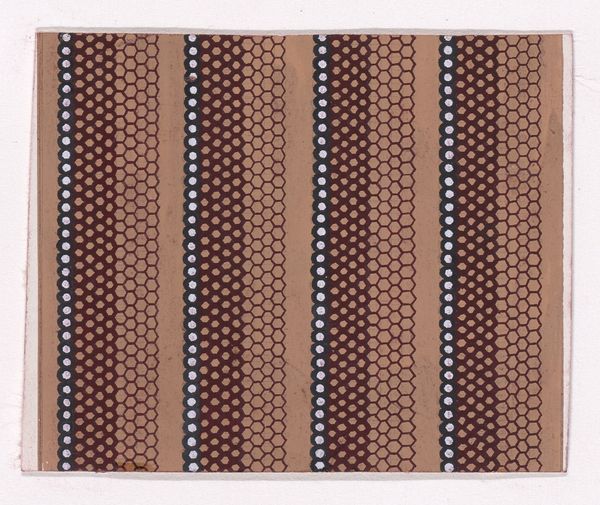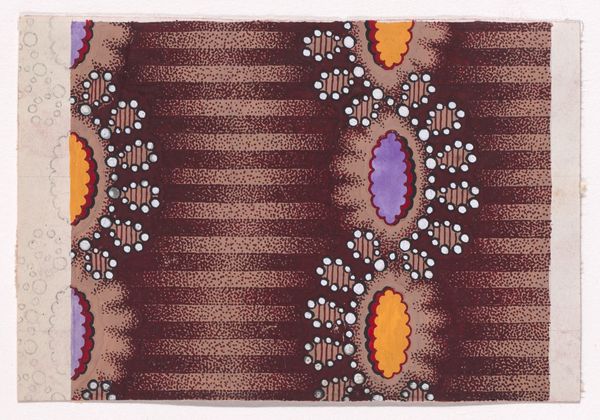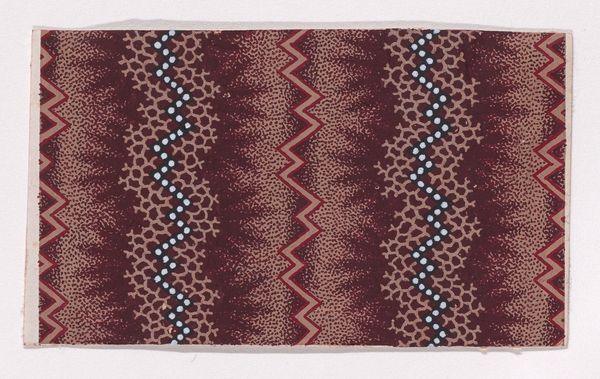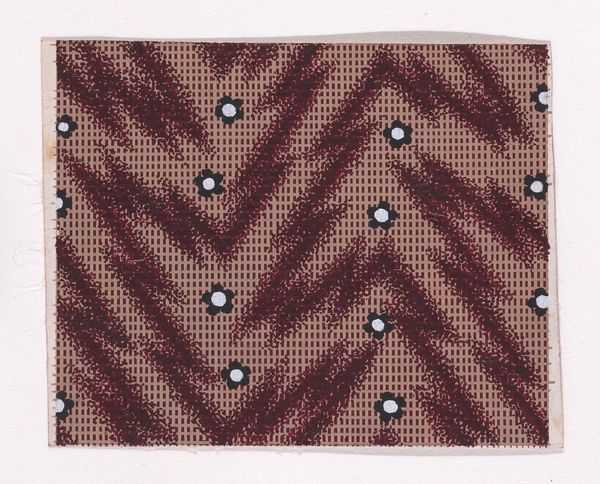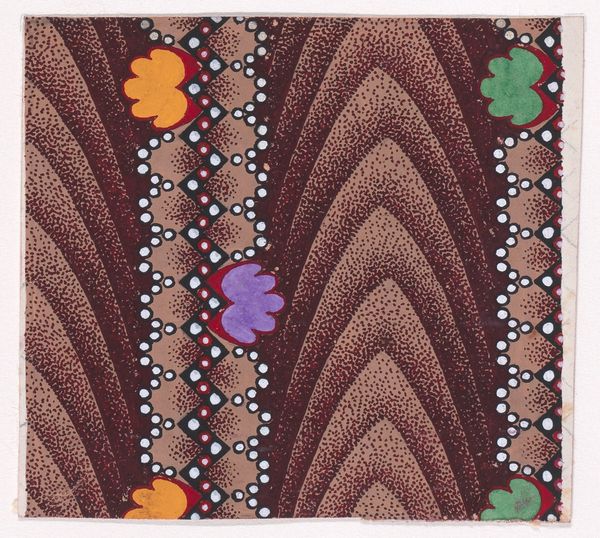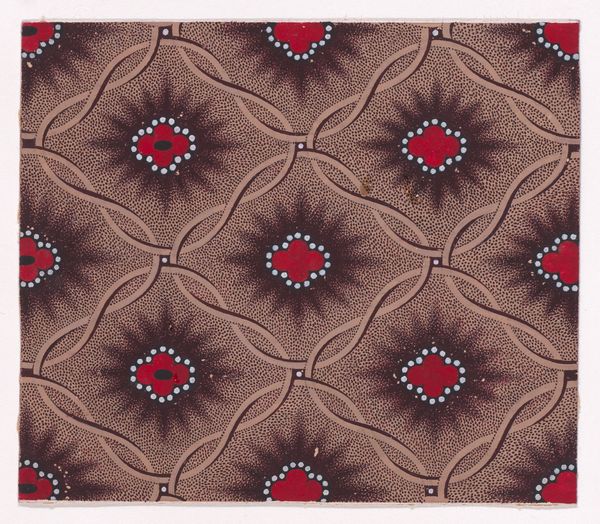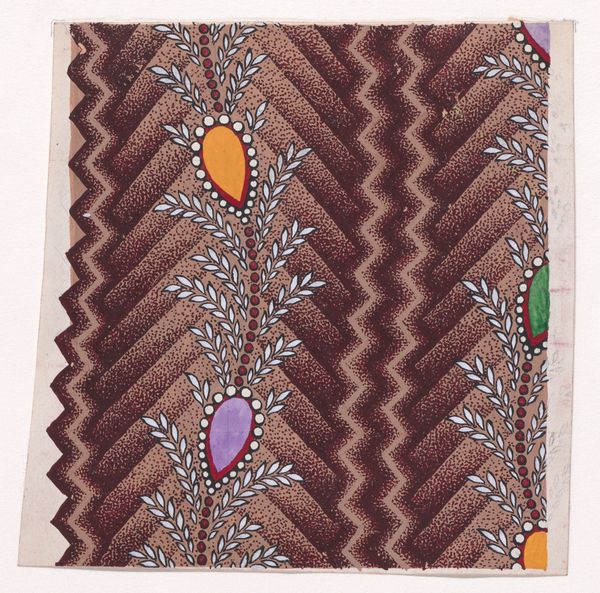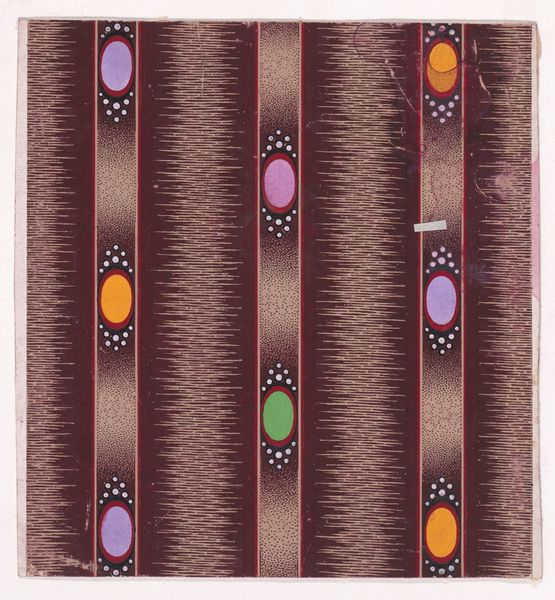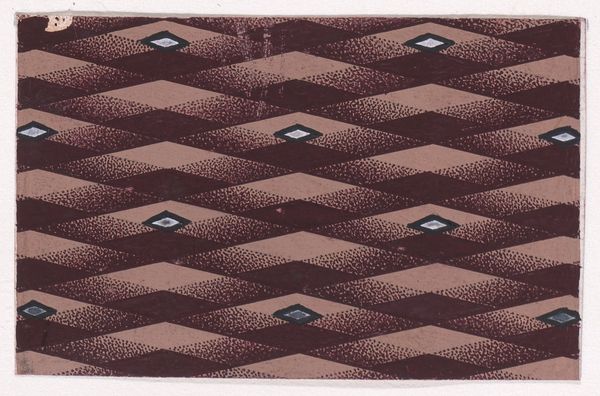
Textile Design with Vertical Garlands Bordered with Pearls Aligned to Form a Pattern of Semicircles Decorated with Oval-Shaped Rings Over a Glitched Background 1840
0:00
0:00
print, textile
#
naturalistic pattern
# print
#
textile
#
fashion and textile design
#
pattern background
#
pattern design
#
ethnic pattern
#
geometric
#
flower pattern
#
repetition of pattern
#
pattern repetition
#
textile design
#
decorative-art
#
layered pattern
Dimensions: Sheet: 4 3/16 × 5 5/16 in. (10.6 × 13.5 cm)
Copyright: Public Domain
Curator: Here we have an intriguing textile design, "Textile Design with Vertical Garlands Bordered with Pearls Aligned to Form a Pattern of Semicircles Decorated with Oval-Shaped Rings Over a Glitched Background", dating back to 1840. It resides in the collection of the Metropolitan Museum of Art. Editor: My first impression is that the print is quite mesmerizing, a rhythmic visual experience that oscillates between order and visual static, the layering evokes a curious feeling that's both appealing and uneasy. Curator: Indeed. Examining the piece more closely, one is struck by its method of production. As a textile design, the work's purpose speaks directly to material application within fashion and design, how was this design impacting the modes of production in textiles, what machinery or new printing techniques enabled its repetitive nature? Editor: Absolutely. Placing this design within the social and political landscape of 1840, we must consider the burgeoning industrial revolution, colonialism, and their impact on labor practices. This type of highly stylized pattern-work often served as a form of cultural exchange but also cultural appropriation, frequently produced in colonial contexts for European markets. Curator: Certainly. The availability of new materials would have altered its creation, allowing for greater precision and perhaps enabling faster creation. The use of pearls, arranged in near perfect symmetry also draws from an earlier decorative excess while reflecting a change towards mass consumption. Editor: Furthermore, who were the artisans or laborers involved in creating this textile design? Considering gender, race, and class dimensions, what social implications were involved in the means of production of textiles at the time, in a space deeply implicated with gendered exploitation of female labor? Curator: The fact that it's categorized under "decorative art" underscores the historical bias present. Shouldn't it be granted higher recognition, especially considering that it has successfully straddled both the applied arts and now fine art given its placement within the museum context? Editor: Precisely! By embracing its layered meanings – its production methods, symbolic context, and socio-economic undertones, the textile speaks to the complex intersection of design, identity, labor, and political structures. Curator: By analyzing this piece through materiality and modes of creation, one acknowledges its importance not just in form but also as documentation to past processes. Editor: In reflecting, recognizing these design works through the prism of power helps challenge assumptions while promoting a more nuanced discussion of their past as well as modern-day relevancy.
Comments
No comments
Be the first to comment and join the conversation on the ultimate creative platform.
